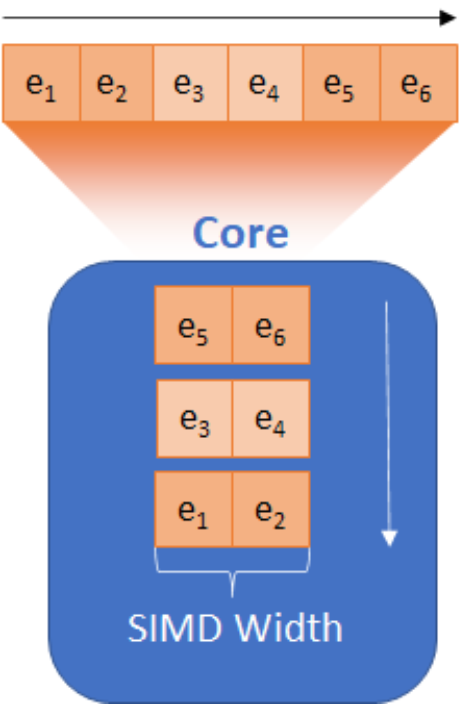Parallelism in Modern Data-Parallel Architectures¶
Python is loved for its productivity and interactivity. But when it comes to dealing with computationally heavy codes, Python performance cannot be compromised. Intel and Python numerical computing communities, such as NumFOCUS, dedicate attention to optimizing core numerical and data science packages for leveraging parallelism available in modern CPUs:
Multiple computational cores: Several computational cores allow to process the data concurrently. Compared to a single-core CPU, N cores can process either N times bigger data in a fixed time, or reduce a computation time N times for a set amount of data.

SIMD parallelism: SIMD (Single Instruction Multiple Data) is a special type of instructions that perform operations on vectors of data elements at the same time. The size of vectors is called the SIMD width. If a SIMD width is K then a SIMD instruction can process K data elements in parallel.
In the following diagram, the SIMD width is 2, which means that a single instruction processes two elements simultaneously. Compared to regular instructions that process one element at a time, 2-wide SIMD instruction performs two times more data in fixed time, or, respectively, process a fixed amount of data two times faster.

Instruction-Level Parallelism: Modern CISC architectures, such as x86, allow performing data independent instructions in parallel. In the following example, see how to compute \(a * b + (c - d)\). Operations \(*\) and \(-\) can be executed in parallel, the last instruction \(+\) depends on availability of \(a * b\) and \(c - d\) and cannot be executed in parallel with \(*\) and \(-\).
